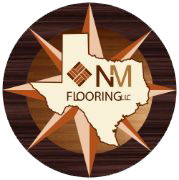Blog
Home / blog

Engineered vs. Solid Hardwood: Pros, Cons & Use Cases
Flooring choices shape the style and durability of your home. Many homeowners compare engineered vs solid hardwood to find the right fit. Both options bring unique strengths and challenges. Learning their differences will help you make a confident decision. Whether you face moisture issues, want wide planks, or need versatile installation, understanding key factors ensures lasting results.
Construction: Understanding Engineered and Solid Hardwood
Solid hardwood is milled from a single timber piece. Its grain and colors remain consistent throughout each board. Engineered hardwood, however, uses multiple cross-layered veneers, creating stability against humidity and temperature changes. This structure reduces warping and cupping significantly. For slab installations, engineered boards adapt better to moisture-prone conditions. In many comparisons of engineered vs solid hardwood, engineered options prove easier to install while requiring less subfloor preparation.
Solid: single timber planks
Engineered: cross-layered veneer design
Engineered resists humidity better
Durability: Comparing Longevity and Resilience
Solid hardwood is known for lasting decades, even up to a century. It allows multiple refinishes. Engineered planks have thinner wear layers, limiting refinishing. However, engineered boards handle humidity swings with less movement. When comparing engineered vs solid hardwood in busy homes, engineered often resists gaps better. Both materials withstand foot traffic, but each responds differently to wear. Your lifestyle and climate should guide this choice.
Installation Methods: Nail-Down vs. Glue Techniques
Nail-down installation is traditional for solid hardwood. Glue-down works best with engineered planks over concrete. Both require careful preparation and moisture barriers. Nail-down methods allow plank replacement later. Glue-down delivers a firmer surface feel. Many homeowners evaluating engineered vs solid hardwood select installation methods based on subfloor type and room location. Choosing the right approach extends flooring life and appearance.
Nail-down for wood subfloors
Glue-down for concrete slabs
Both require moisture barriers
Moisture Resistance: Handling Humidity Challenges
Wood reacts strongly to moisture changes. Solid planks expand and contract across their full thickness. Engineered flooring reduces this effect with its layered construction. Therefore, engineered works better in basements and humid spaces. Still, both types need moisture barriers over slabs. Many homeowners conclude that engineered vs solid hardwood differs most in moisture stability. Engineered often delivers peace of mind in climates with high humidity.
Aesthetics: Wide Plank vs. Traditional Cuts
Wide planks showcase wood grain and create a modern, seamless look. Narrow planks offer a traditional style, fitting smaller rooms or patterned designs. Both engineered and solid boards can be crafted into wide or narrow styles. However, room size and design goals should guide your decision. In engineered vs solid hardwood discussions, aesthetics remain equally compelling in both options.
Wide planks highlight grain beauty
Narrow planks offer classic elegance
Both styles available in engineered and solid
Maintenance: Cleaning and Upkeep Requirements
Both flooring types require sweeping or vacuuming to control dust. Damp mopping with approved cleaners maintains shine. Area rugs and pads protect surfaces. Solid floors can be refinished many times. Engineered allows fewer refinishes but still supports decades of use. With engineered vs solid hardwood, upkeep looks similar. Stable humidity indoors prevents cracks, gaps, or warping in either choice.
Cost Analysis: Budget Considerations
Solid hardwood often costs more initially. Engineered provides a budget-friendly alternative while offering authentic hardwood appeal. Installation costs vary depending on method. Long-term value differs as solid hardwood lasts longer due to repeated refinishing. However, engineered’s lower entry cost helps many households. When deciding engineered vs solid hardwood, align budget and long-term plans with your choice.
Environmental Impact: Sustainability Factors
Solid hardwood from certified forests supports sustainable practices. Engineered flooring conserves premium timber by using fast-growing species in its core layers. Both can be eco-friendly when sourced responsibly. Engineered often reduces total wood use per square foot. While comparing engineered vs solid hardwood, sustainability depends on responsible sourcing, finishes, and manufacturer practices.
Real-World Applications: Choosing the Right Type
Solid hardwood enhances bedrooms, dining areas, and spaces with stable humidity. Engineered excels in kitchens, basements, or sunrooms with fluctuating moisture. Many homeowners even combine both types throughout a home. Balancing beauty and resilience is easier when you compare engineered vs solid hardwood based on room conditions. Tailoring material to space ensures durability and consistent style.
FAQs
Which lasts longer, engineered or solid hardwood?
Solid hardwood can last over a century with refinishing. Engineered lasts decades but offers better moisture stability.
Is engineered hardwood easier to install?
Yes, engineered adapts well to varied subfloors and supports glue-down methods over concrete, simplifying installation compared to solid planks.
Can both engineered and solid hardwood be refinished?
Solid allows multiple refinishings. Engineered permits fewer, depending on wear layer thickness, but still offers long service life.
Which is better for humid areas?
Engineered flooring handles humidity better due to its layered design, making it more stable in damp environments.
Where can I get expert installation advice?
Visit the contact page for professional guidance on selecting and installing hardwood floors.
Making the Best Decision for Your Home
Deciding between engineered vs solid hardwood requires considering climate, lifestyle, and long-term goals. Solid floors deliver timeless elegance and refinishing potential. Engineered planks provide stability in moisture-prone spaces. Explore your options further on our flooring solutions page to find the perfect fit for your home.
Free estimates available
@ 2025 -Nava Meneces Flooring LLC | All Rights Reserved




